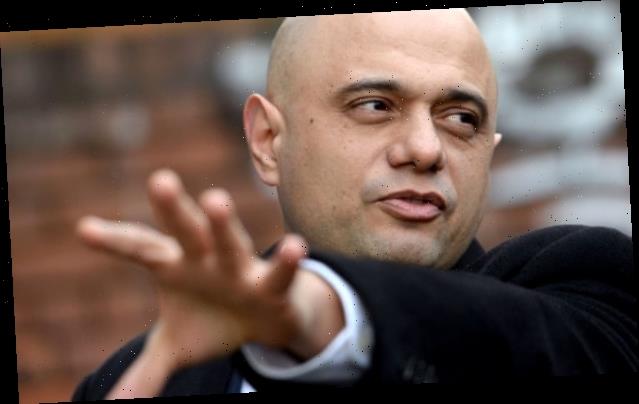This week the election campaign has been squarely focused on public finances, with the Conservatives publishing a widely derided £1.2tn assessment of Labour’s spending plans. In spite of the debunking of these figures, the party has doubled down with a separate assessment of Labour’s tax plans – it says Labour’s spending plans outweigh how much it plans to collect in tax, leading to a £2,400 per taxpayer “gap” that will need to be filled by borrowing or raising taxes.
Of course, the Conservatives are aware of the quality of the claims they are making. As a tactic, the £1.2tn is straight out of the “£350m a week” playbook: come up with a big figure, and no matter if it’s indefensible, wait for it to stick. The more your opponents complain, the more they end up repeating the big number until it’s indelibly imprinted on voters’ minds.
Many of the figures presented to arrive at this big number are questionable. Labour has not yet agreed the policies in its manifesto and some of the spending and tax proposals included in these calculations, such as replacing council tax with a property tax, are not currently Labour policy. And where the calculations involve policies that have been previously announced, assumptions have been made in order to generate the largest possible estimate of their costs.
Next are the presentational tricks. There can be good reasons to present figures aggregated to five-year totals: such as when setting an ambition for a parliament, for instance, or if you expect year-to-year fluctuations that are superficial rather than meaningful. But in this case, with no good reason to do it, presenting a five-year £1.2tn figure looks a lot like an attempt to inflate the number. It’s then even more misleading to compare this erroneous five-year figure to an annual figure for GDP, as the Conservatives went on to do. Even if we were to accept their costings, they would represent roughly 12% of GDP on an annual basis, not 60% as is claimed.
Sajid Javid’s assessment of Labour’s tax plans that supposedly reveals a tax gap of £2,400 per taxpayer is a poor way to present the likely impact on voters of increased spending. First, the Conservatives haven’t taken into account any of the potential benefits of the policies, such as income from nationalised utilities and rail, which could recoup some of the upfront cost. We’d also expect to see incomes – and therefore tax revenues – rise as a result of increased investment. But even if taxes did need to rise, thankfully we have a progressive tax and benefit system, which would spread the costs to those more able to pay. It is reasonable to assume that the tax changes Labour might introduce would also be progressive, given previous commitments. This means that while £2,400 will look very worrying to a low-income voter, it’s a tax bill they’re unlikely to ever be presented with.
To ordinary people without the tools or time to decode policy costings, incomprehensibly large numbers start to become meaningless. So too do economic analyses: if these numbers can’t be trusted, why should other numbers widely reported in the press be trusted either? Election antics such as these therefore damage the fabric of public debate, and as a consequence the strength of our democracy.
They also direct public attention on to narrow and overly simplistic accounting rather than the economic questions that really matter. Economic policy is seen as no more than management of the public finances, with policies that we know really shape how the economy works and for whom it works – such as investment, industrial strategy and regulation – treated as secondary.
Yet we know that it is fundamental reform of the economy that is urgently needed. Wages are only just recovering from their pre-recession peak and several regions in the country have been in technical recession since 2015. The UK has been near the bottom of the Organisation for Economic Co-operation and Development (OECD) league table for investment for 20 years – yet with the ongoing crises of regional inequality and climate breakdown, the country can no longer afford not to invest.
But the Tories continue to paint the kind of investment required as an upfront cost deemed unaffordable. In fact, in the Conservatives’ new fiscal rules and in the name of economic credibility, public investment would be limited to 3% of national income – below the level our OECD peers already invest and unlikely to be sufficient to meet the challenges we face as a society.
This is austerity logic in action. George Osborne’s legacy goes further than the unnecessary cuts imposed on public services and welfare budgets, to an obsession with upfront, direct policy costings as the only measure of economic credibility. Policy costings are presented as a “neutral” assessment, but are in fact deeply and opaquely politicised, and favour incremental policies with low upfront investment over potentially more effective, transformative policies.
While we’re all obsessing over the numbers, we lose sight of the questions that really matter. What determines affordability is where and how the money is used. We urgently need to repair the damage that has been done to public services and family incomes by austerity over the past decade, and to invest in the economy so that incomes – and consequently tax revenues – can grow.
Worsening public finances give next PM a sharp ‘reality check’
Rather than boiling down economics to a poorly executed accounting spreadsheet, we need to be focusing on how parties plan to fix the longstanding weaknesses of our economy and how they plan to avert catastrophic climate breakdown – so that we even have an economy to talk of in years to come. The cracks are showing in the UK’s economic model. Let’s not focus on the wallpaper as the house crumbles around us.
• Carys Roberts is chief economist and head of the Centre for Economic Justice at the Institute for Public Policy Research
Source: Read Full Article
